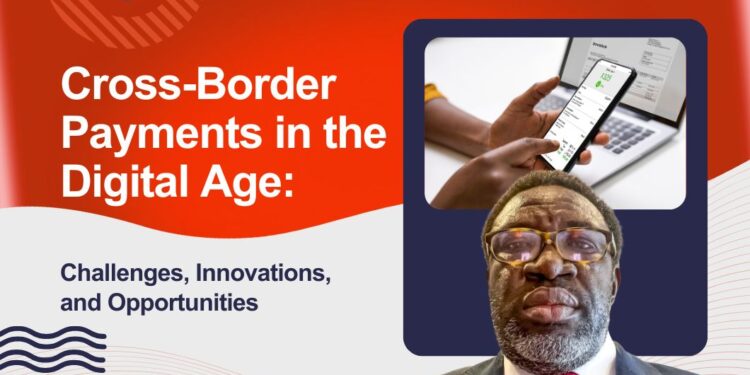Introduction
Global commerce has never been more interconnected. Businesses and individuals can now buy, sell, and transfer funds across continents within seconds thanks to the rise of digital cross-border payment solutions. What was once a complex, expensive, and time-consuming process is being reshaped by financial technology (fintech) and innovations in digital payment infrastructure.
According to the World Bank, global remittances reached $860 billion in 2023, while cross-border e-commerce is projected to exceed $7.9 trillion by 2030. This surge highlights the critical role of efficient and secure cross-border payment systems in the modern economy.
But despite technological progress, cross-border payments remain one of the most challenging areas in finance, plagued by high costs, regulatory hurdles, and interoperability issues. This article explores the key challenges, groundbreaking innovations, and emerging opportunities that define cross-border payments in the digital era.
The State of Cross-Border Payments Today
Cross-border payments power global trade, international remittances, and foreign investments. Traditionally, these transactions relied on correspondent banking networks, a chain of intermediary banks moving money from sender to receiver.
The Problem with Traditional Systems
- Slow Processing Times: Transactions can take 2–5 business days to settle.
- High Costs: Average global remittance fees hover around 6%, according to the World Bank.
- Lack of Transparency: Senders often have no visibility into exchange rates, fees, or delays.
- Limited Access: Millions of unbanked individuals in emerging markets face barriers to receiving cross-border funds.
Key Challenges in the Digital Age
Even as digital platforms emerge, several obstacles remain:
1. High Transaction Costs
Legacy systems involve multiple intermediaries, each taking a cut. Additionally, foreign exchange (FX) spreads and compliance costs add to the burden.
2. Fragmented Infrastructure
Different countries operate under disparate payment systems, making interoperability a major hurdle.
3. Regulatory Complexity
Compliance with anti-money laundering (AML) and know-your-customer (KYC) requirements varies by jurisdiction, increasing friction for fintechs and users.
4. Currency Volatility
Fluctuating exchange rates impact the predictability of cross-border transactions, especially for businesses managing global supply chains.
5. Fraud and Cybersecurity Risks
The more digital the system, the higher the potential for fraud, phishing, and hacking attempts, making robust security essential.
Innovations Driving Transformation
Despite these challenges, fintech innovation is rewriting the rules of cross-border transactions. Here’s how:
1. Blockchain and Distributed Ledger Technology (DLT)
Blockchain offers decentralized, transparent, and near-instant settlement across borders.
Examples:
- RippleNet facilitates real-time cross-border payments for banks and payment providers.
- Stellar powers low-cost remittances and micropayments in emerging markets.
Benefits:
- Reduces intermediaries.
- Lowers fees significantly.
- Enhances transparency and security.
2. Stablecoins and Central Bank Digital Currencies (CBDCs)
- Stablecoins (e.g., USDC, USDT) offer price stability compared to volatile cryptocurrencies, making them ideal for cross-border transactions.
- CBDCs: Central banks are experimenting with digital currencies for international trade, such as China’s Digital Yuan and the mBridge project involving multiple Asian economies.
3. Real-Time Payment (RTP) Networks
Domestic RTP systems like India’s UPI, Europe’s SEPA Instant, and Brazil’s Pix inspire similar models for instant cross-border settlement.
4. Open Banking and API Integration
Open banking allows fintechs to directly connect with bank infrastructure, enabling account-to-account (A2A) transfers across borders without relying on card networks.
5. Artificial Intelligence and Machine Learning
AI improves:
- Fraud detection through real-time anomaly monitoring.
- FX optimization for better rates.
- Compliance automation reduces delays from manual checks.
6. Digital Wallets and Super Apps
Platforms like PayPal, Wise, Revolut, and GrabPay now allow users to send money internationally with minimal friction, often at a fraction of traditional banking fees.
Opportunities in the Cross-Border Payment Space
The digital revolution opens up massive growth potential in cross-border transactions:
1. Remittances for Migrant Workers
- $860 billion in annual remittances represents a major opportunity for low-cost, high-speed solutions.
- Mobile-first platforms targeting unbanked populations will thrive.
2. Cross-Border E-Commerce
- Global consumers increasingly purchase goods from overseas markets.
- Fintechs offering embedded currency conversion and instant settlement can dominate this space.
3. B2B Payments
- Businesses seek faster settlements and better FX management for supply chain payments.
- Fintech-driven platforms like Airwallex and Rapyd are filling this gap.
4. Gig Economy and Freelance Payments
- Millions of freelancers need real-time, low-cost international payouts.
- Digital wallets and blockchain solutions cater to this segment.
5. Financial Inclusion
- Mobile money and digital wallets help unbanked individuals in emerging economies receive global payments without needing a traditional bank account.
Future Trends in Cross-Border Payments
Looking ahead, several trends will define the next phase of cross-border transactions:
1. Global Interoperability Initiatives
Projects like SWIFT gpi, ISO 20022, and Visa Direct aim to create unified standards for seamless global payments.
2. CBDC-Enabled Cross-Border Systems
Expect to see bilateral and multilateral CBDC corridors, reducing reliance on the U.S. dollar for trade settlements.
3. Increased Use of AI and Data Analytics
Predictive analytics will help optimize FX costs, compliance, and fraud prevention in real-time
4. Super Apps and Embedded Finance
Payments will become invisible, integrated into lifestyle platforms for e-commerce, travel, and entertainment.
5. Regulatory Harmonization
Global regulators will work toward consistent compliance standards to reduce friction for fintech innovation.
Challenges to Overcome for a Fully Digital Future
Despite opportunities, certain critical gaps remain:
- Cybersecurity Threats: With digital comes vulnerability; blockchain and AI-driven fraud detection are essential.
- Digital Identity Verification: A lack of global standards for identity verification complicates KYC processes.
- Digital Divide: Many regions still lack reliable internet access, limiting adoption.
Conclusion
Cross-border payments are at the heart of the global digital economy, enabling trade, remittances, and financial inclusion. While legacy systems continue to create
friction through high costs, delays, and lack of transparency, fintech innovations, blockchain, stablecoins, RTP networks, and AI are transforming the landscape.
The future of cross-border payments is faster, cheaper, and more inclusive. Businesses, fintechs, and regulators that embrace collaboration, interoperability, and security-first innovation will lead the next wave of global finance.
As we enter the next decade, the question isn’t whether cross-border payments will become fully digital—it’s how soon and who will lead the charge.














